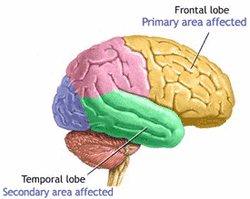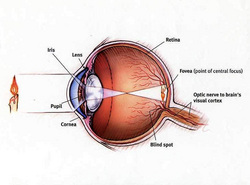Chapter 21
Control and Coodination
The Nervous System

Courtesy of Disaboom Live Forward
A stimulus is any external change that brings about a response. A stimulus can be anything; noise, smell, light, and temperature are a few examples. Homeostasis is the regulation of steady, life-maintaining conditions inside an organism, despite changes in its environment. Homeostasis is controlled partially by the nervous system. Neurons are the basic functioning units of the nervous system. They are made up of cell bodies and dendrites. An impulse is any message carried by a neuron. Dendrites receive these impulses, and send them to the cell body. The cell body then sends it to the axons. Along the axons are myelin sheaths, which allow the neurons to touch. If the sheaths were not there, there would be electrical shocks every time impulses crossed the neurons; that would be a lot!
Synapses are spaces in between axon terminals and dendrites. Tiny bubble-like chemicals go across the space, so the impulse can continue going to the brain.
The central nervous system, or CNS, is made up of the brain and the spinal cord nerves. The peripheral nervous system, or the PNS is all of the nerves other than the CNS.
The brain coodinates all of your cell activities. The cerebrum is the part of the brain that does the thinking. The cerebellum is where stimuli form the eyes, ears, muscles, and tendons are interpreted. The brain stem is at the bottom of the brain, and it connects the brain and the spinal cord.
Reflexes are involuntyary movements controlled by the spinal cord. It would take too long for the brain to interpret the information, so instead the spinal cord controls the reflexes.
Synapses are spaces in between axon terminals and dendrites. Tiny bubble-like chemicals go across the space, so the impulse can continue going to the brain.
The central nervous system, or CNS, is made up of the brain and the spinal cord nerves. The peripheral nervous system, or the PNS is all of the nerves other than the CNS.
The brain coodinates all of your cell activities. The cerebrum is the part of the brain that does the thinking. The cerebellum is where stimuli form the eyes, ears, muscles, and tendons are interpreted. The brain stem is at the bottom of the brain, and it connects the brain and the spinal cord.
Reflexes are involuntyary movements controlled by the spinal cord. It would take too long for the brain to interpret the information, so instead the spinal cord controls the reflexes.
The Senses

Courtesy of The Mysterious Eye
Coming soon!
